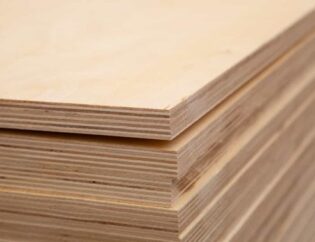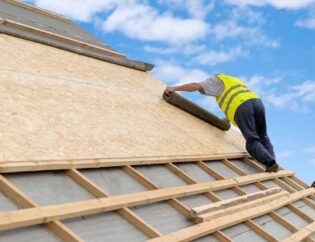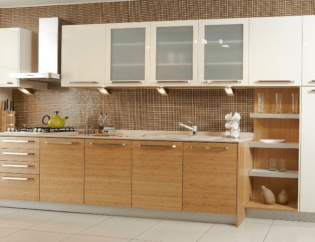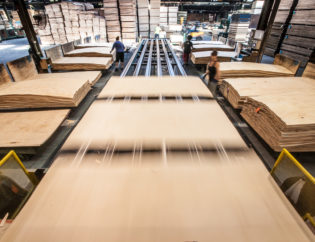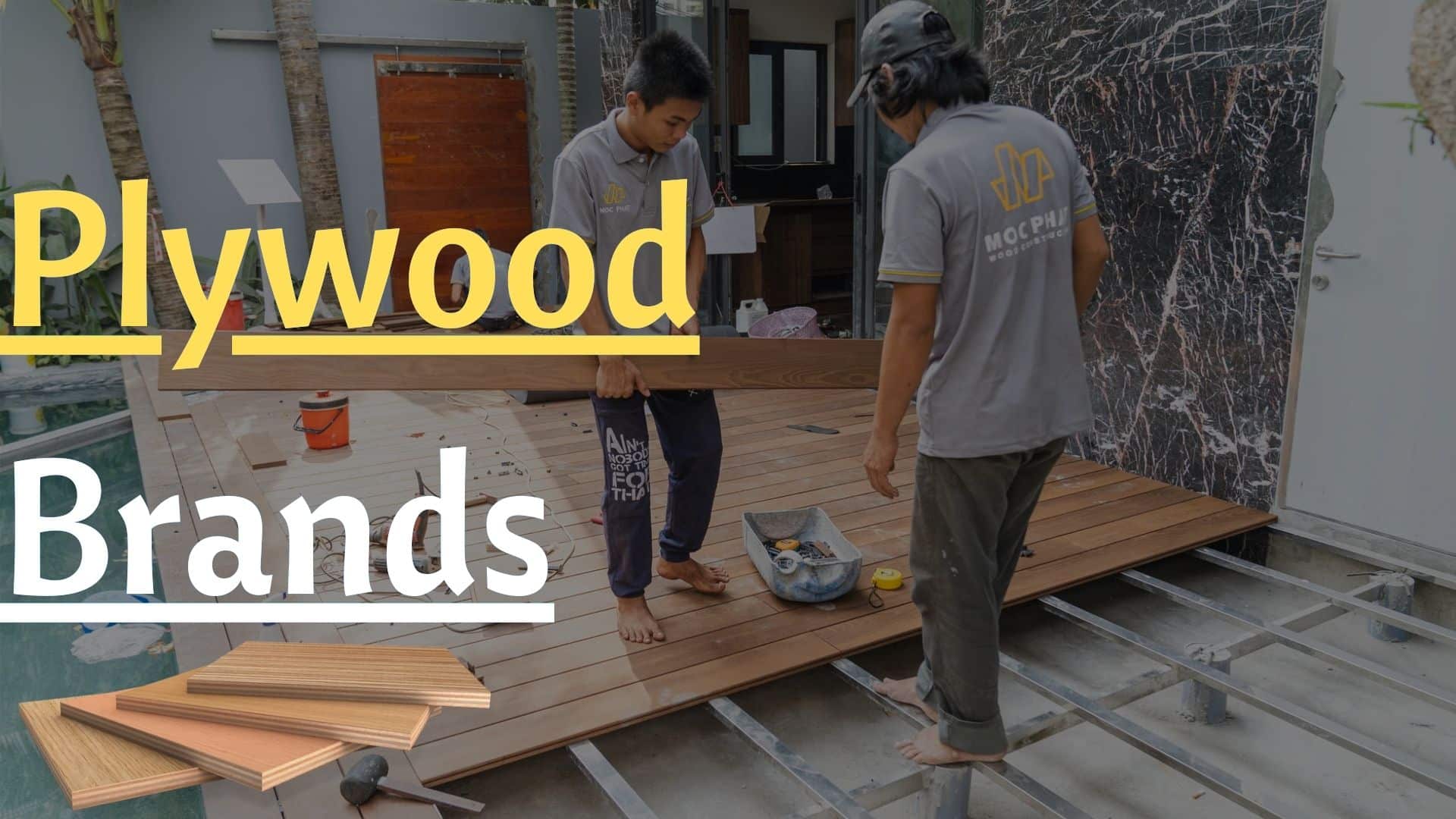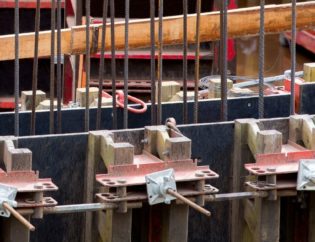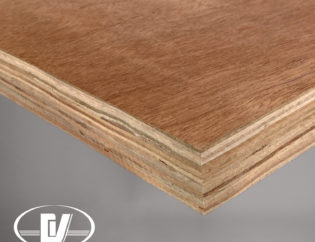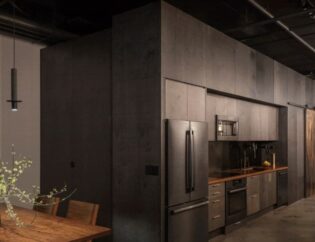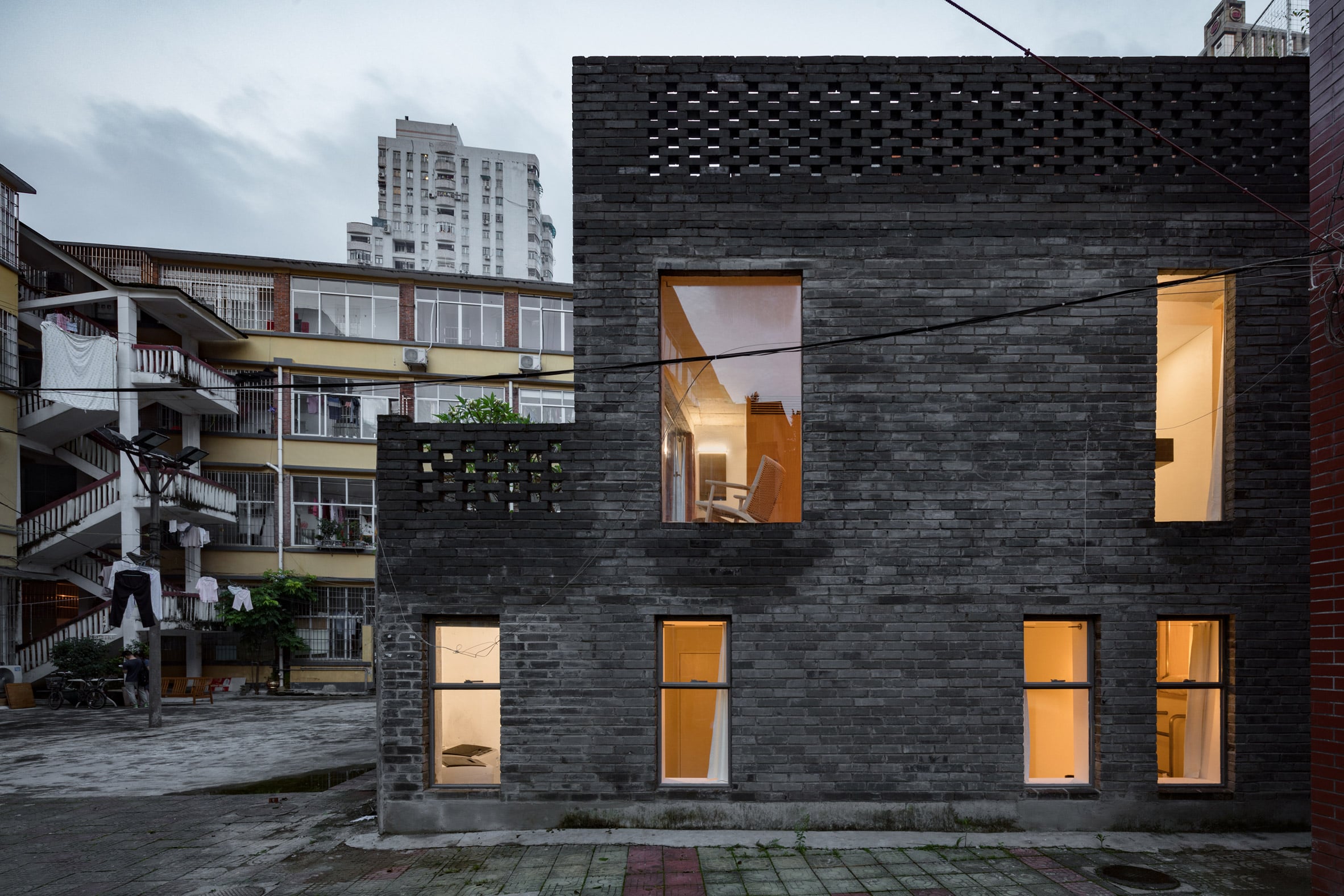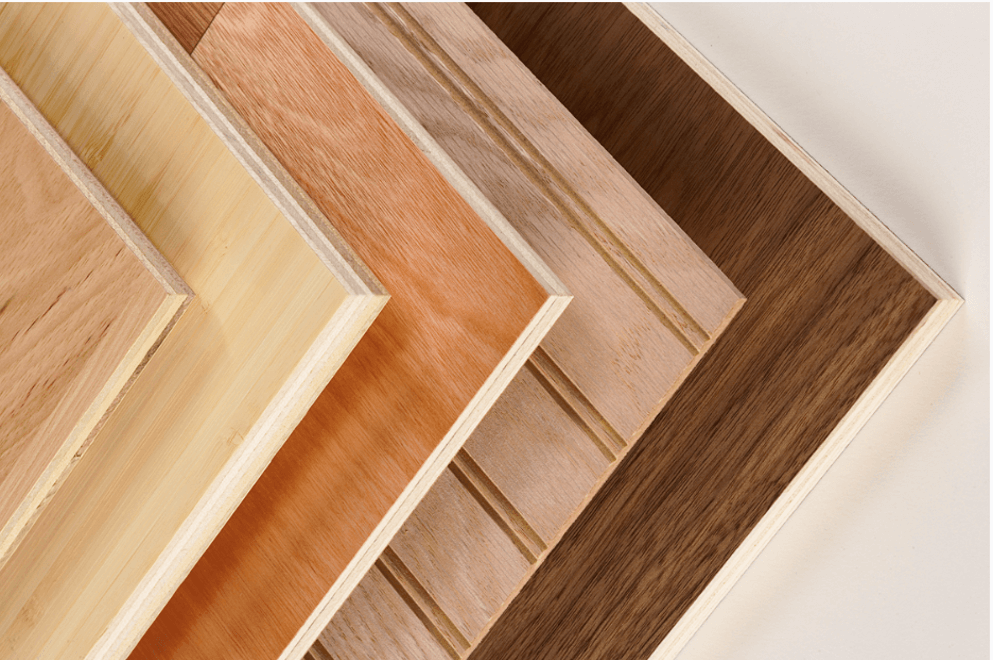
Is plywood a good option for cabinets and furniture?
Yes, plywood can be an excellent option for cabinets and furniture for several reasons:
- Strength and Durability: Plywood is made by gluing together thin layers of wood veneer, with the grain of each layer perpendicular to the adjacent layers. This construction gives plywood great strength and stability, making it less prone to warping or cracking compared to solid wood.
- Cost-Effectiveness: Plywood is often more affordable than solid wood, making it a cost-effective choice for large-scale projects like cabinets and furniture.
- Variety of Grades and Finishes: Plywood comes in various grades, ranging from construction-grade to furniture-grade. You can choose the grade that best suits your needs and budget. Additionally, plywood is available in different finishes, including plain, veneered, or laminated, offering versatility in design options.
- Consistency: Unlike solid wood, plywood has uniform strength and appearance throughout the sheet, reducing the risk of defects such as knots or voids that can affect the structural integrity of the finished product.
- Environmental Sustainability: Plywood is often manufactured from sustainably sourced wood, making it an environmentally friendly choice for conscientious consumers.
> Read more: Laminate Flooring: Everything You Need to Know
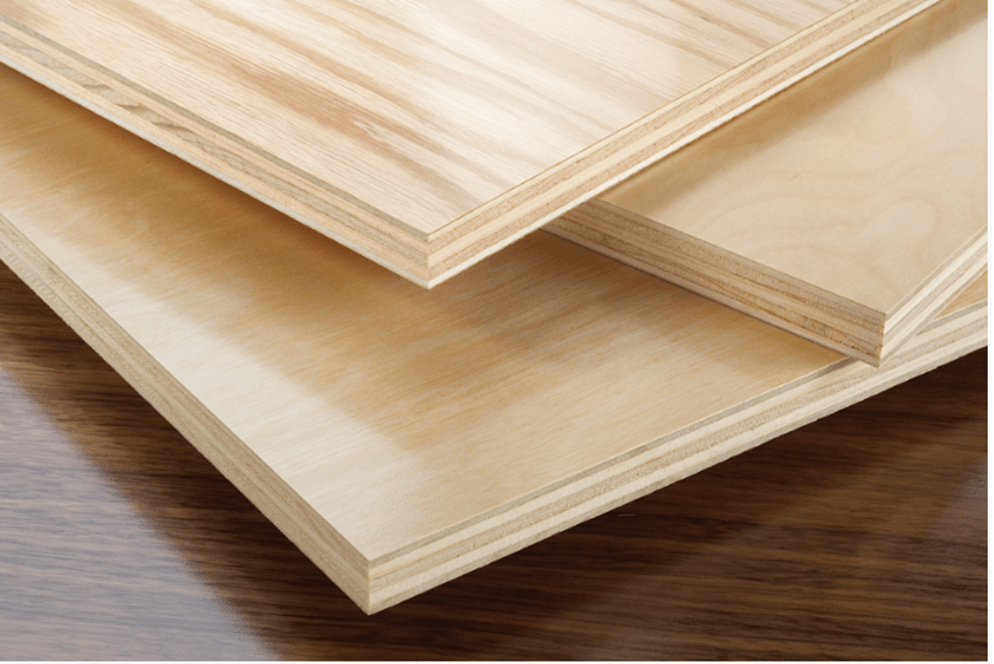
How to Identify the Best Plywood for Cabinets
Choosing the right plywood for cabinets can be challenging due to the variety of options available, each catering to specific needs. For those new to the furniture industry, the numerous terms and types can be confusing, making it difficult to select the appropriate plywood for a project.
To help you make an informed decision, we have outlined the essential steps to follow before purchasing plywood for high-quality furniture. Additionally, we recommend reading our comprehensive article on the best materials for kitchen cabinets in the USA for further guidance.
Ensuring Plywood Flatness for Cabinets
It’s crucial to ensure the plywood you choose for cabinets is flat, as warped plywood is difficult to work with and can lead to various safety and durability issues. Opting for genuine, flat plywood enhances performance and usability, particularly for large surfaces like cabinet doors, floors, and roofs. While encountering a few warped pieces is uncommon, it’s essential to avoid them. Plywood that isn’t at least 95% flat indicates stacking problems, which can result in further complications.
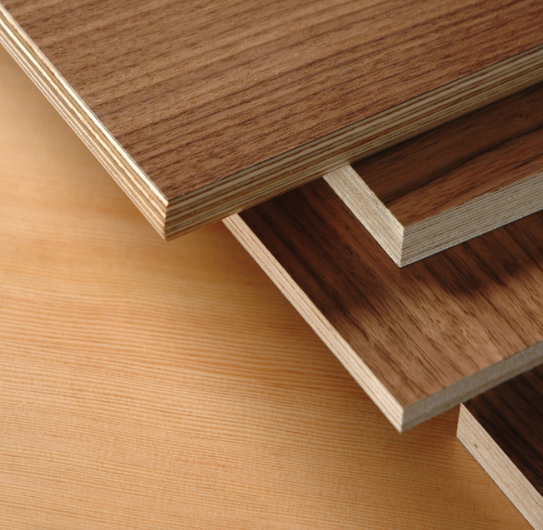
Edge Inspection
When inspecting edges, we focus on the piles and thickness of the hardwood cores, which we measure by examining the plywood’s edges. Generally, thicker plywood edges are preferred as they offer better quality. Thin veneered plywood poses significant challenges during sanding and polishing. Additionally, visible holes and knots within the veneer layers can detract from the overall quality of the plywood.
Using piles and thicker veneers results in perfect edges, ensuring there are no voids or knots. The structural integrity and condition of the cabinet are not compromised by the cabinet unit itself. A pressed wooden panel face and back assessment provides a stunning design with polished interior and exterior surfaces, edges, and end boards. We utilize Euro Ply, known for its distinctive all-birch, multi-layer edge. The slight inward curves give the finished edges of the cabinet a unique style, eliminating the need for edge band treatment and leaving the pressed wood edges exposed.
Avoid using birch, pine, and maple when staining cabinet-grade plywood.
Certain wood species are challenging to stain, as they can develop blotchy, uneven tones or absorb stains unpredictably. Birch, for instance, does not take well to stains, often resulting in an uneven, splotchy finish with dark stains. Despite its grain pattern being similar to more expensive woods like Cherry, Mahogany, and Walnut, birch is a more affordable option that can appear high-end with the right stain color.
Pine, with its uneven thick grain, also poses staining challenges. Stains struggle to penetrate the dense sections of the wood, making the staining process time-consuming. While bright colors can yield good results on pine plywood, dark colors should be avoided. Pine tends to absorb a lot of stain around knots and cracks, which can make dark stains appear uneven and plain.
Maple, being hard and dense, does not allow large pigment particles to penetrate well. For staining maple, light or medium colors are recommended, as dark stains do not perform well. To prevent an uneven tone, a polyurethane finish can be applied.
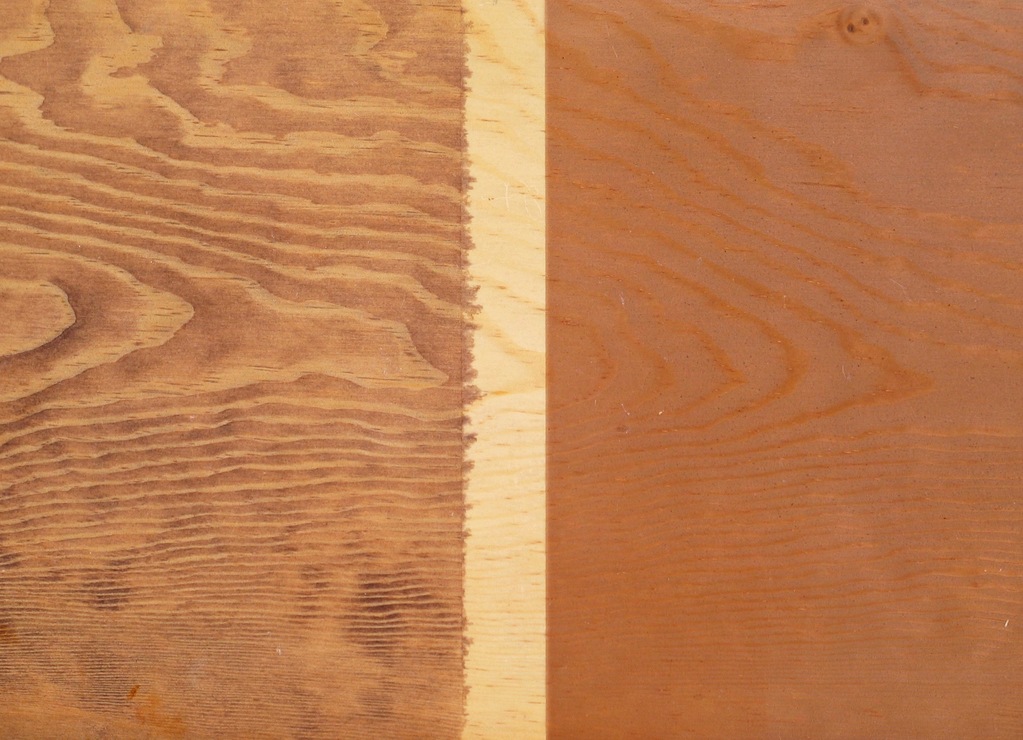
Understanding the Grading System
Plywood comes in various grades, and selecting the appropriate grade depends on the environment where it will be used. The term “cabinet grade plywood” applies to both softwood and hardwood plywood. Woodworkers use this types of plywood to construct cabinets and household furniture. Choosing the correct grade is crucial to avoid the need for edge band treatment, especially for certain hardwoods like cherry, red oak, and maple.
Occasionally, you might encounter plywood labeled as “bureau grade.” In these cases, the specific hardwood core veneers are not typically specified. This label usually refers to more affordable hardwoods, such as Baltic birch plywood or different types of mahogany.
Always Watch Out for Damage Types of Plywood for Cabinets
While plywood is a strong manufactured material, it is not impervious to damage. We must be vigilant when purchasing plywood to identify any issues. Be prepared to repair damaged plywood, especially if key areas are compromised. Common types of damage include scratches and blisters.
Water damage typically affects the edges of plywood first, necessitating modifications. Significant damage, like shattered pieces, often requires replacement.
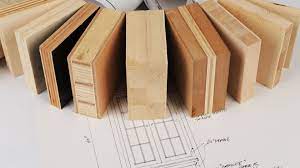
Inspect Face Veneers
The face veneer is crucial in plywood manufacturing. Veneers are thin sheets of wood or bark attached to core panels, which can be wood, particleboard, or medium-density fiberboard (MDF). Veneers are used to create flat panels for tops, doors, cabinets, and parquet floors. Plywood consists of three or more veneer layers, each bonded with the grain at right angles to the adjacent layers for strength.
The back veneer surface features attractive color variations. Face veneers contribute to the mechanical and aesthetic qualities of plywood. For standard thicker plywood, a suggested thickness range is one-eighth inch. A thick face veneer covers the appearance of resin on the plywood core surface, resulting in a smooth and appealing look. It also enhances the mechanical properties of the plywood, contributing to its durability. Face veneers can be rotary cut or plain sliced.
Choose to Haul Sheets Yourself
If you transport the sheets yourself, you’ll experience the weight of hardwood plywood. By striking the middle of the plywood sheets, you can determine if it’s hollow. If it’s not hollow, you’ll hear consistent noises from all sides. Additionally, check for thickness variations along the four edges of the plywood.
> Read more: Hardwood Flooring: Types, Costs and Color Selection Guide
Go with an Experienced Friend
It’s beneficial to have someone knowledgeable about plywood types accompany you. For instance, if you’re looking for marine plywood but aren’t familiar with the quality and style, a merchant might offer you commercial plywood instead and charge more. An experienced friend can help you avoid getting inferior wood that decays faster, saving you money on future replacements and installation.
Look Out for the Curves
Many modern buildings feature curved kitchen cabinets and bow-front cabinets. Bent plywood creates a smooth, cohesive look in cabinetry and furniture. For designs requiring curved edges, use plywood cabinets with the right curve.
The ideal plywood has thin plies that bend easily yet are strong enough for additional manufacturing and gluing. You can bend plywood at home using clamps, an MDF form, or a ratchet strap. MDF provides a stable panel. Bonding more layers of plywood can increase thickness and strength for a durable bend. Give the plywood adequate time to curve, regardless of the technique used.
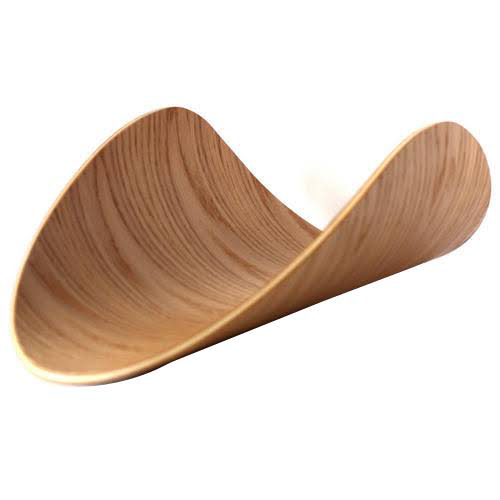
Which plywood varieties are best suited for cabinets?
In addition to facial evaluations, the quality of commercial-grade plywood is also determined by the type of core used in its manufacture. Depending on the producer, various core types are available, each with unique features and attributes.
For cabinets, plywood varieties that are commonly preferred include:
Hardwood plywood
Hardwood plywood is made from hardwoods, as its name suggests. Oak, maple, and birch are some of the woods that are used. This plywood tends to be the heaviest of all the plywood options. It is most often used for furniture or something that requires a frame for load bearing.
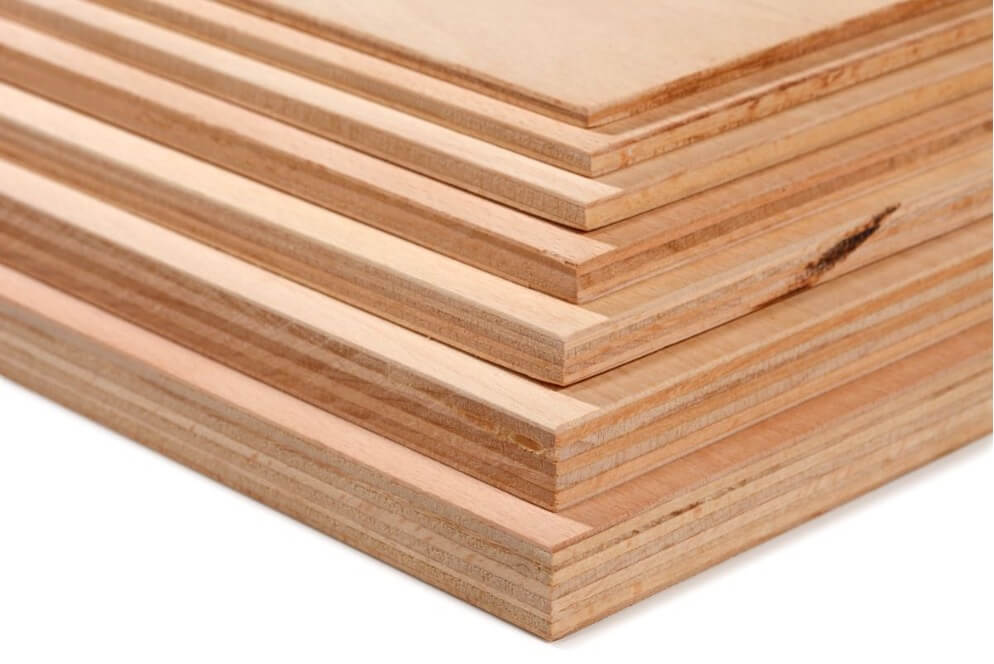
Plywood panels
Plywood panel is pre-cut and ready to use boards that are ideal for DIY projects. They can be various types of ply and wood.
Sanded plywood
Sanded plywood has plies on the top and bottom that are sanded during the manufacturing process. This type of plywood is ideal for items that can be seen, such as shelving, paneling, and cabinets.
Structural plywood (plywood sheathing)
Structural plywood is intended for permanent fixtures and structures. It is affordable but strong. It is not finished and is best used in places that will not be seen. Another material, such as flooring should cover it. It is also used for framing, bracing, and beams.

Exterior plywood
Exterior plywood is specifically designed for outdoor use. It is bonded with water-resistant glue, preventing deterioration due to moisture. Commonly, it is used for sheathing in home construction.
While exterior plywood can be utilized for outdoor projects and furniture, it is not the most aesthetically pleasing option. To ensure its longevity and protect it from rot, it must be painted or sealed.
Furniture and cabinet grade plywood
Cabinet grade plywood, also known as hardwood plywood or appearance grade plywood, features outer veneer layers made from hardwoods such as birch, maple, or oak. This type of plywood is typically more expensive and heavier than sanded plywood, but it offers a significant upgrade in quality. Its superior finish makes it an excellent choice for constructing cabinets and furniture. I use it for 99% of my projects.
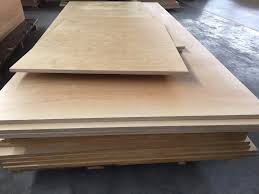
How many grades of Cabinet Plywood?
Below are the four main plywood cores to consider when selecting the ideal cabinet-grade plywood. Remember, higher grades are more expensive but worth the investment for long-lasting results. While the species of wood may be the same, the manufacturing process can vary.
Plywood Grade A
A-grade cabinet plywood is the highest quality, featuring perfect veneers, making it the most costly. This grade offers a smooth, knot-free surface that is paintable. The thickness of A-grade plywood depends on the number of plain sliced sheets glued together.
Plywood Grade B
B-grade plywood is mostly free of knots, though it can have some tight knots smaller than 1 inch. This grade has a solid base and a slightly less smooth surface compared to A-grade. It may have minor, repairable defects.
Plywood Grade C
C-grade cabinet plywood contains a few knots up to 1.5 inches in diameter and knotholes under 1 inch. This grade is of lower quality compared to A and B grades.
Plywood Grade D
D-grade cabinet plywood is the least expensive and of the lowest quality. It has uncorrected defects, with knots and knot holes up to 2.5 inches in diameter being common.
For finishing panels, use those stamped with A or B grades. If finishing both sides, ensure both are A or B grades. C-D grade plywood is suitable for internal decor. An additional grade with an X, such as A-CX, indicates water-resistant glue and suitability for exterior use. CDX plywood, used in construction of tabletops and storage containers, has a C grade on one veneer and a D grade on the other, designed for exterior use and able to withstand some moisture exposure.
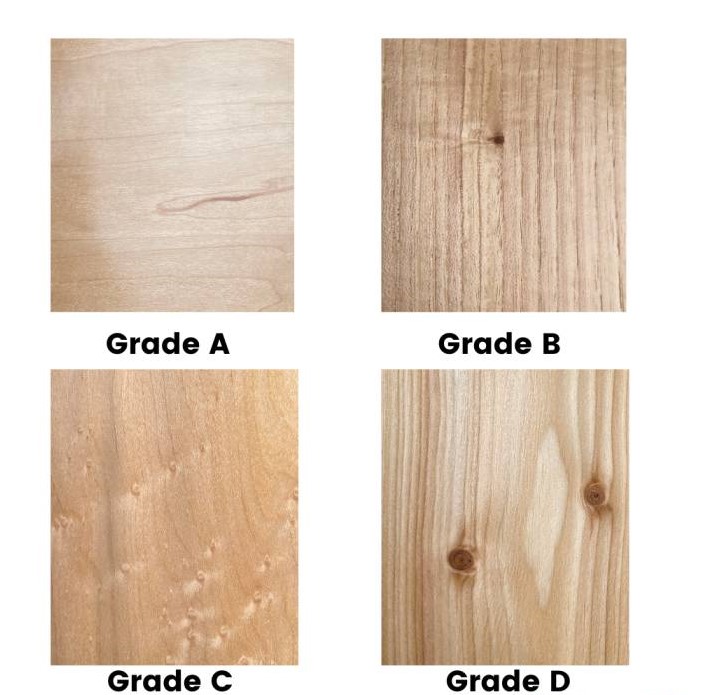
What plywood thickness is recommended for cabinets?
In traditionally fabricated face-framed cabinets, the frame provides significant structural support, allowing for thinner and less sturdy materials inside the cabinet. However, the trend is shifting towards frameless cabinets, which require stronger materials and a different construction method.
Fabricators often prefer local ANSI HP-1 nominal three-quarter-inch plywood for its durability. These boards can be used without additional support for the backs and sides, resulting in a sturdy, frameless cabinet box that can be hung directly onto studs.
The thickness of plywood needed depends on the application: ¾″ plywood is ideal for side panels, bottom panels, and shelving, while ¼″ plywood is suitable for drawer bottoms, door panels, and cabinet backs. Although using ½″ plywood instead of ¾″ can save money, it compromises structural integrity and requires different supplies, making the cost savings minimal and often not worthwhile. Therefore, ¾″ plywood is more versatile and reliable for most situations.
Where to buy cabinet grade plywood?
Depending on your location and what options you have around you, there are lots of places to potentially buy plywood.
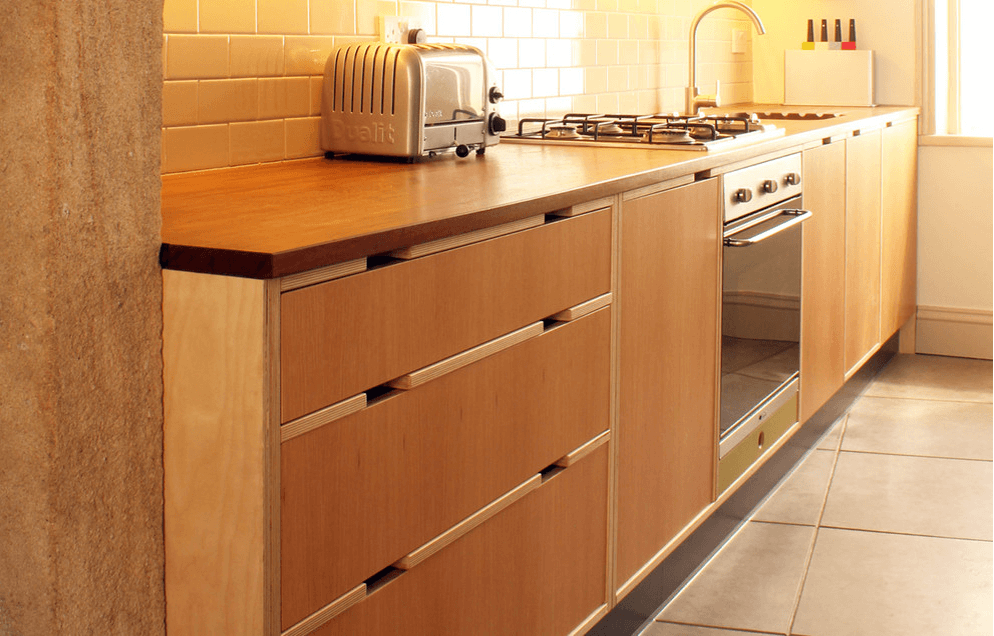
Many stores have a wide variety of plywood options, but because they’re catering to builders, their cabinet grade plywood options are usually pretty limited.
You may be able to find some of the more common options on the shelves–like birch, maple, or oak. But if you can’t find hardwood plywood there, they usually at least carry sanded plywood and can often order some specialty options, too.
Another option is your local building supplier. Many times these local suppliers may not keep hardwood or sanded plywood well stocked, but they can often order it for you if they don’t have it on their shelves.
If you’re fortunate enough to have a hardwood lumber supplier locally who sells plywood, you can likely find some really nice, high end or specialty plywood there. But since we don’t have anything like that where I live, I don’t have a lot of advice to share about buying it that way.
Vinawood is a prestige supplier from VietNam,established in 1992. VINAWOOD specializes in producing Film Faced/Formwork Plywood, Commercial Plywood, Furniture Plywood, and wholesaling office furnitures.Being on the lead and favored by the majority of foreign markets in Asia Pacific, in 2012, VINAWOOD took a leap forward on production standards and started exporting to North American, Latin American markets (the U.S.A, Mexico), and Middle Eastern markets (Turkey, the U.A.E.). In 2014, VINAWOOD established Domestic Sales Department to serve trading and construction needs in Vietnam.
This is the place that your can consider buying plywood for your project. Plywood is too pricey for you to not be picky about it. Make sure you take your time to look it over well before adding it to your cart.
> Read more: Birch Plywood: Uses, Benefits, and Drawbacks Explored
MDF and plywood cabinets, which is better?
If you’re torn between plywood and MDF cabinets for your home, it’s important to understand the differences in composition, strength, appearance, and cost to make an informed decision.
Both materials have their own distinct qualities, and the choice largely hinges on your requirements, budget, and design preferences. Here’s a breakdown of the advantages and disadvantages of plywood versus MDF cabinets to help you decide which is best for your kitchen renovation.
Plywood and MDF are both derived from wood, but their manufacturing processes set them apart. Plywood cabinets consist of layers of wood pressed together, with each layer oriented in alternating directions for exceptional strength. On the other hand, MDF, or medium-density fiberboard, is created by transforming wood fibers into pulp, combining them with resins, and subjecting them to high pressure and heat to form a solid board.
The distinction between plywood and MDF is noticeable in their appearance and texture. Plywood retains a visible wood grain pattern due to its layered construction, while MDF boasts a smoother, flatter surface without any discernible wood grain.
The choice between plywood and MDF depends on the specific requirements of your project, such as whether you prefer painted or stained cabinets. Plywood offers superior durability, making it a worthwhile investment for cabinets that will withstand heavy use over time. Meanwhile, MDF is more budget-friendly and provides a smoother surface for painting and applying veneers.
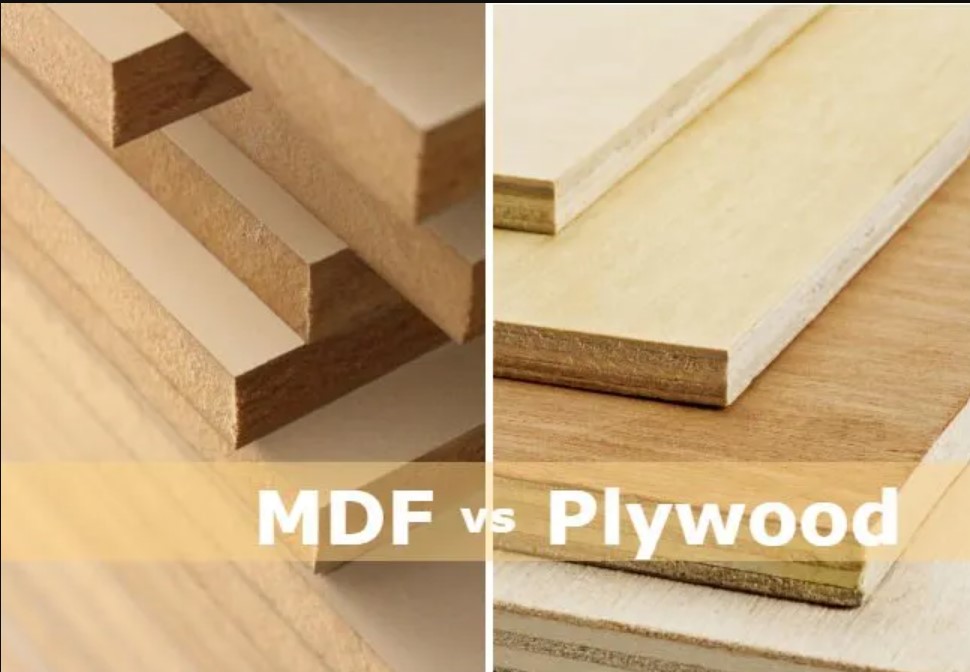
Most plywood for cabinets typically feature a Baltic birch plywood core paired with red oak or maple hardwood. If you prefer oak or maple plywood, expect to pay a premium. For many homeowners, birch plywood with a hardwood veneer is an excellent option. The plywood provides stability to the cabinet, while the hardwood veneer often appears indistinguishable from solid wood.

